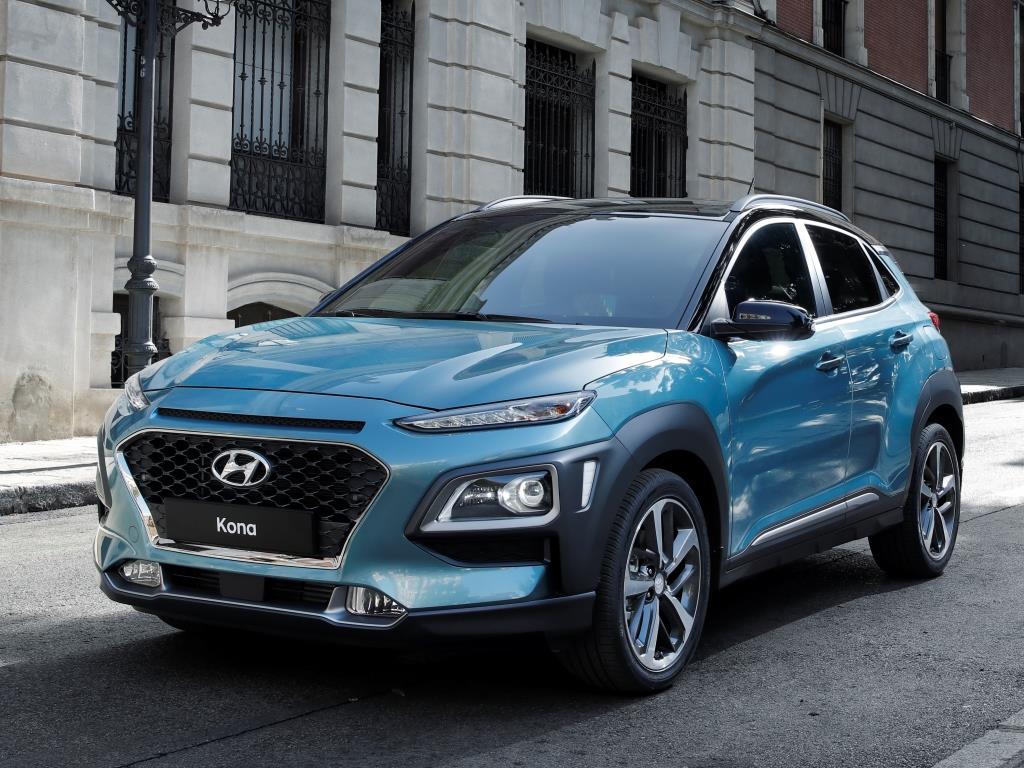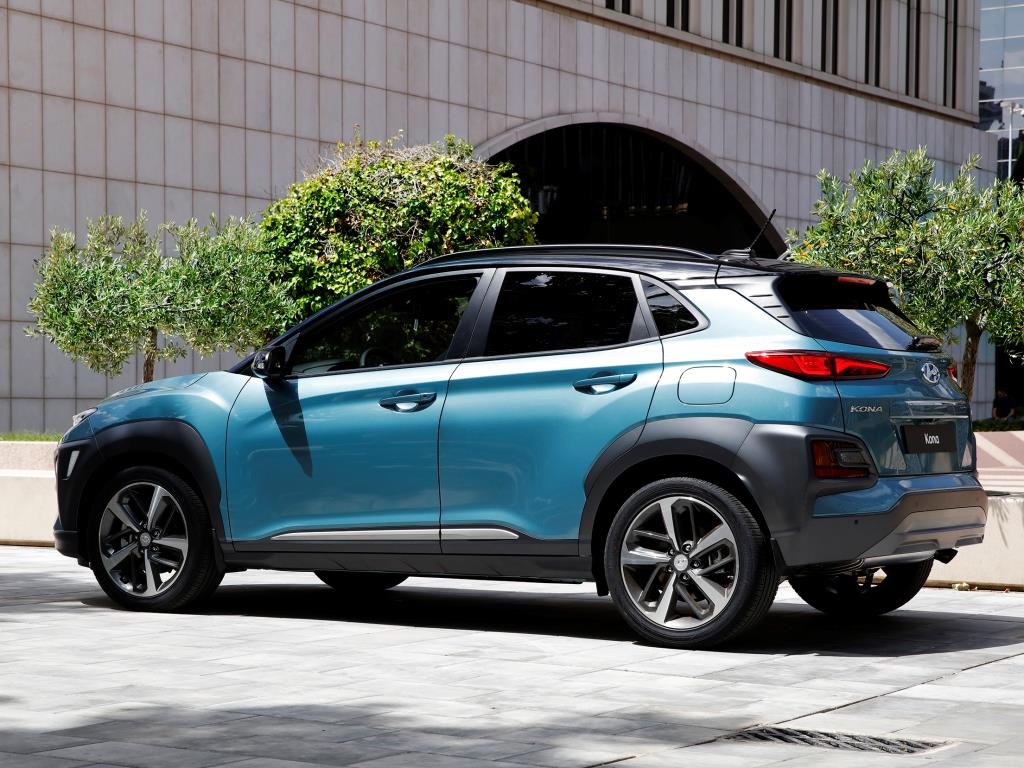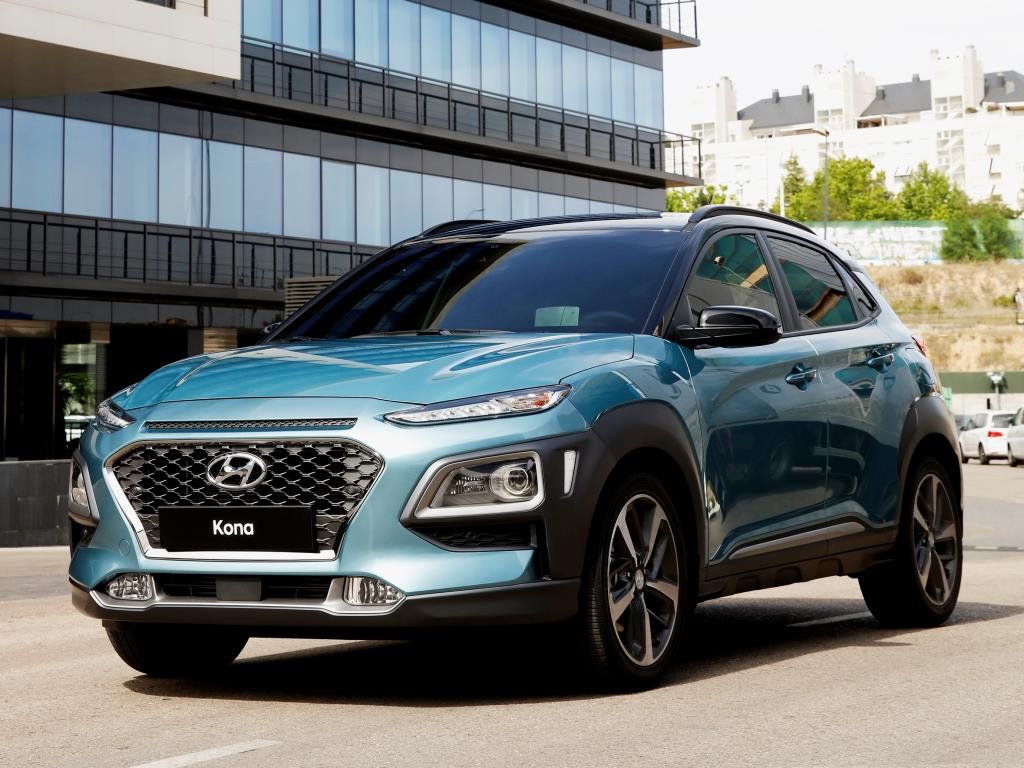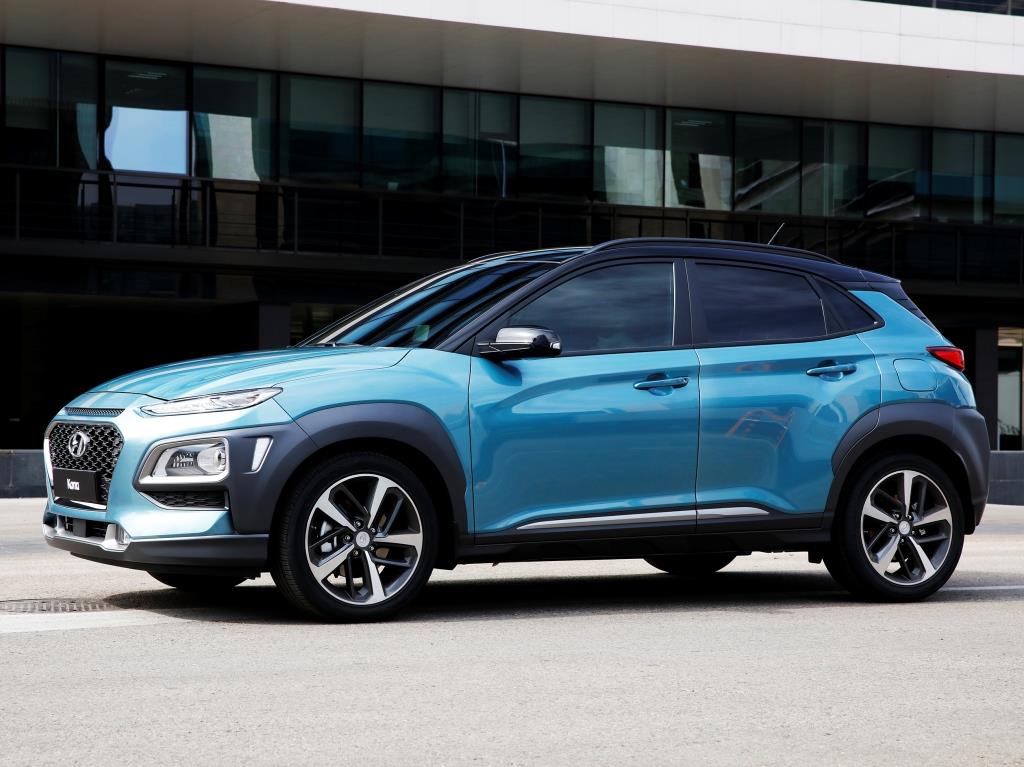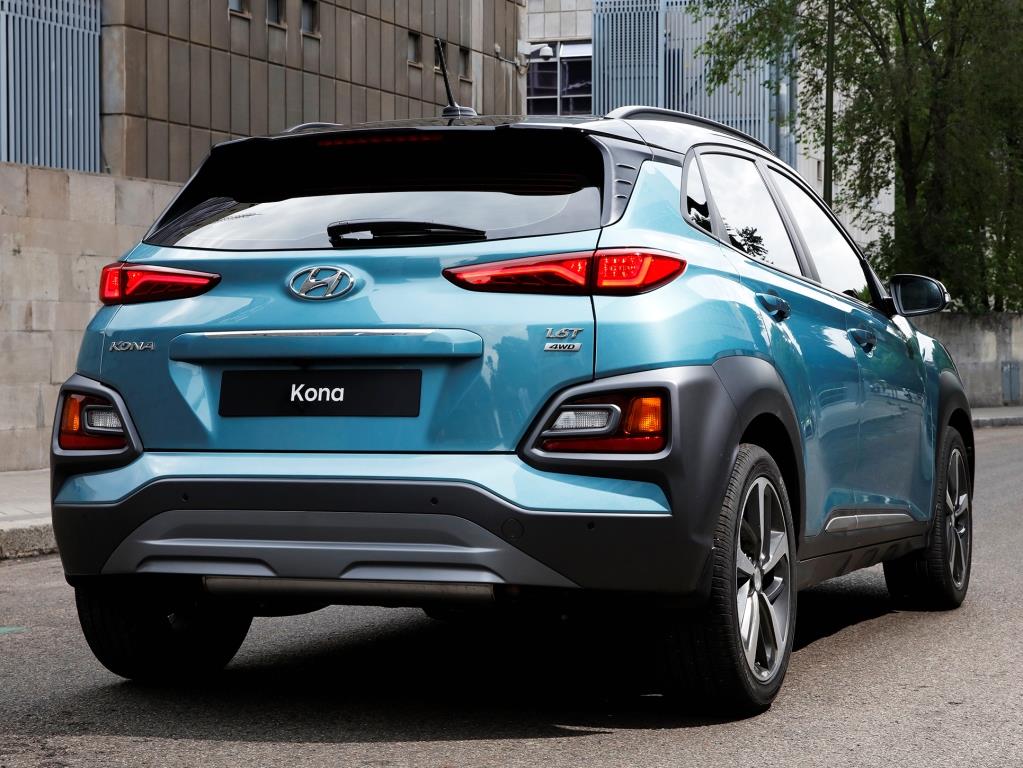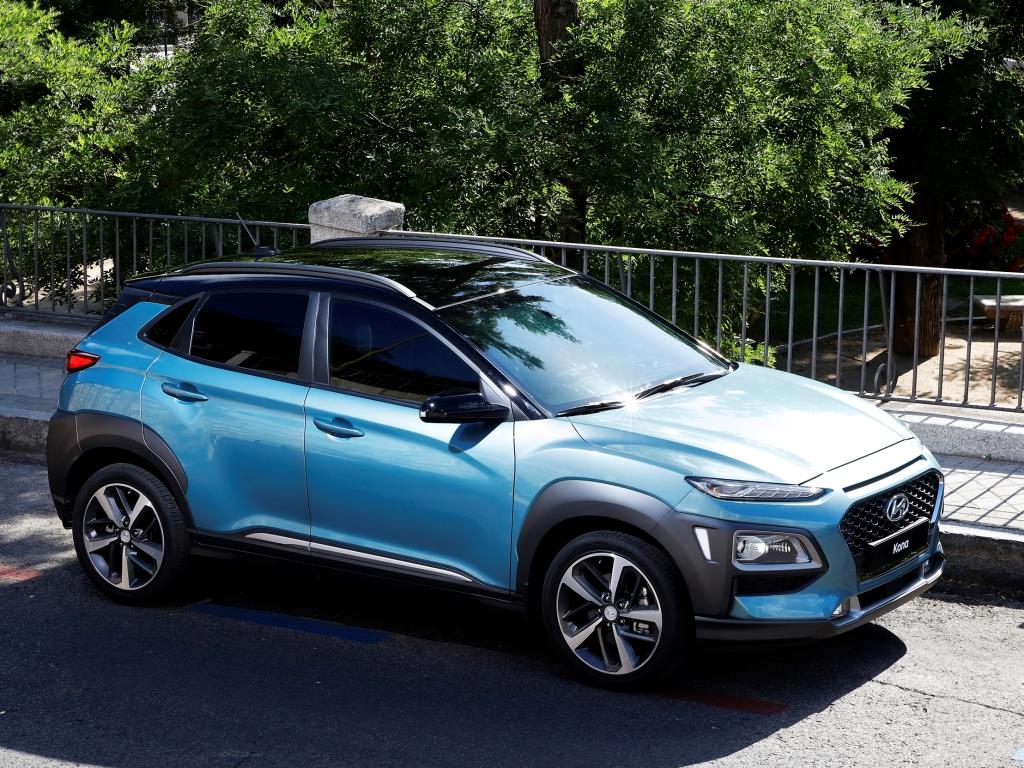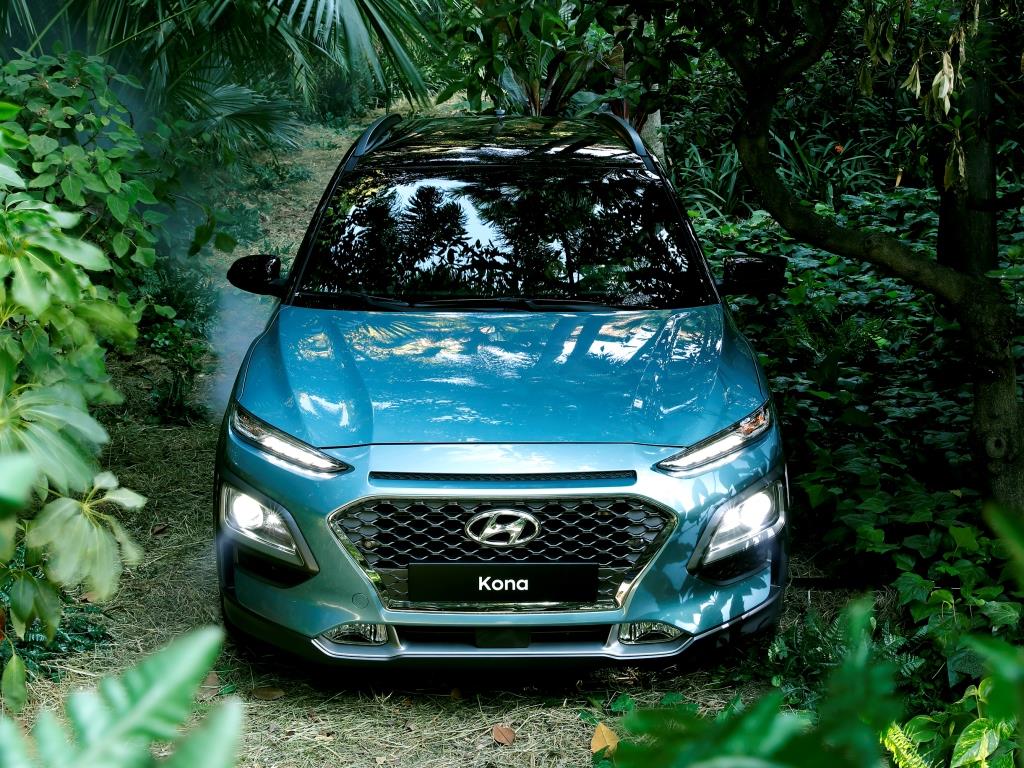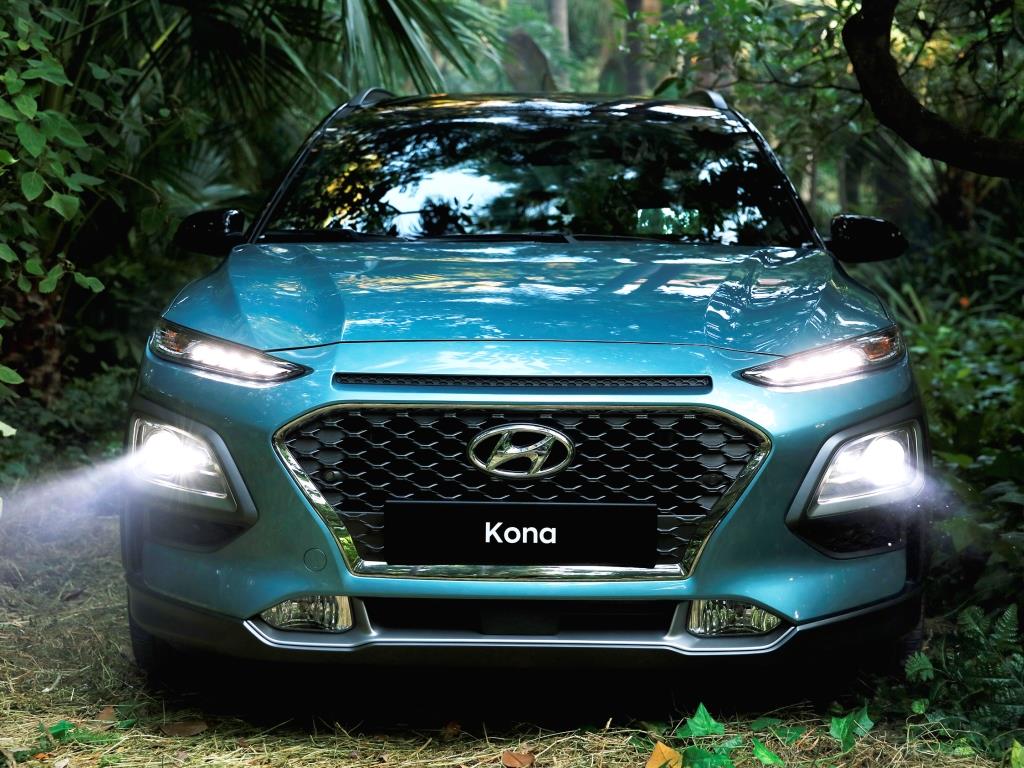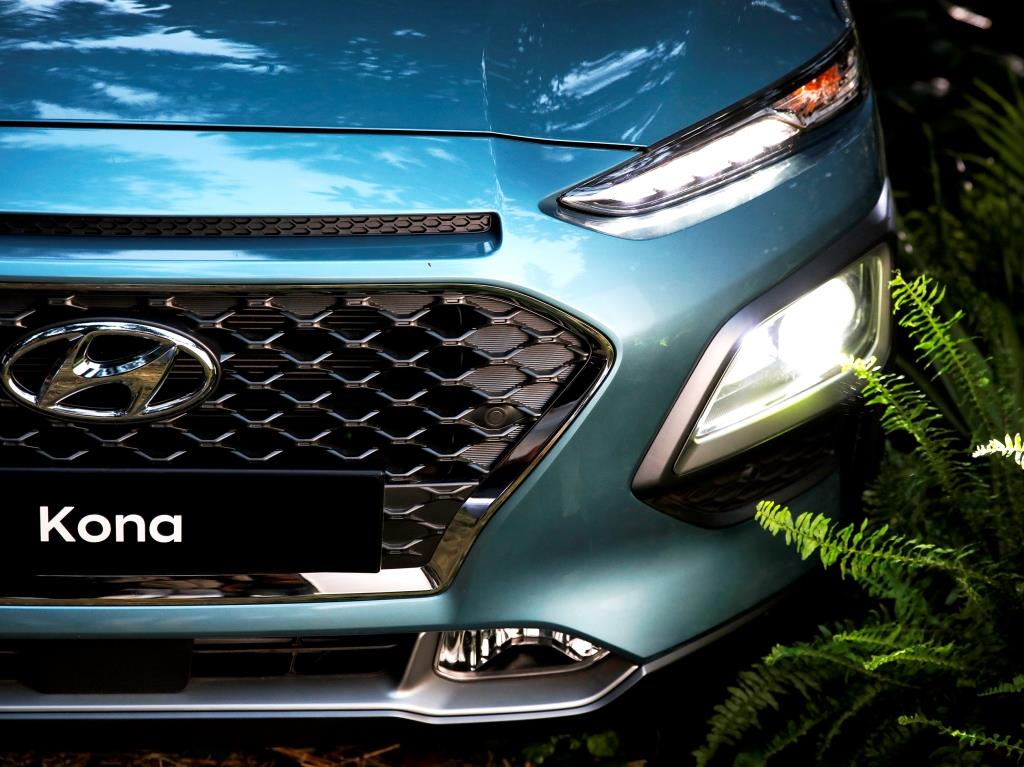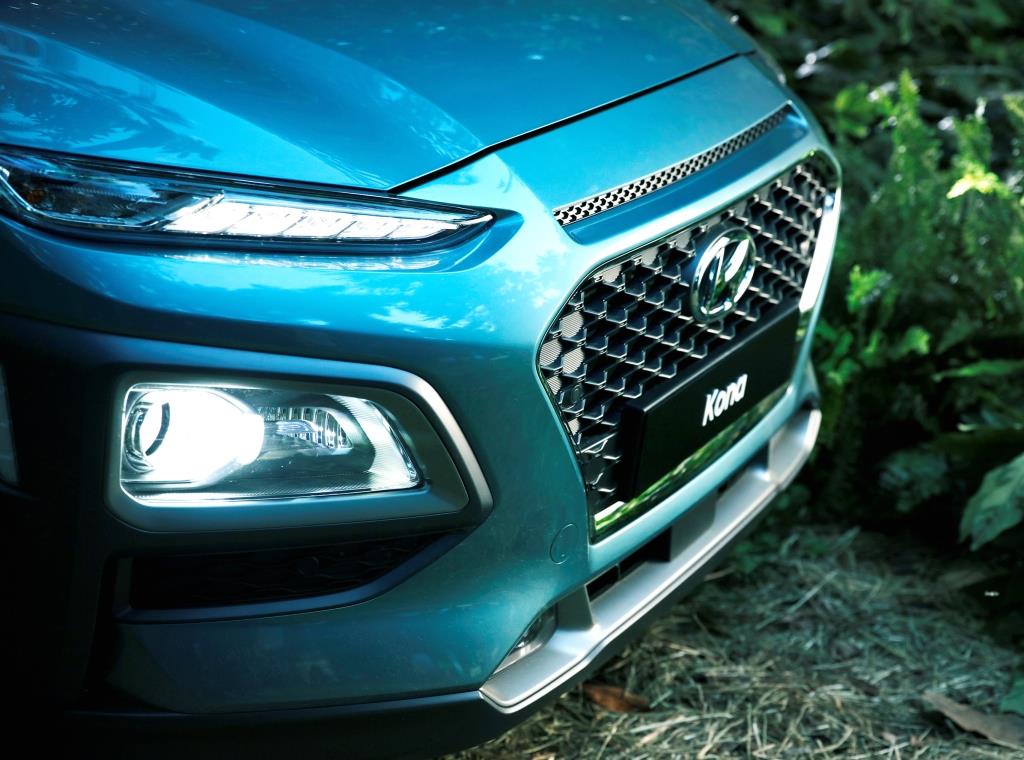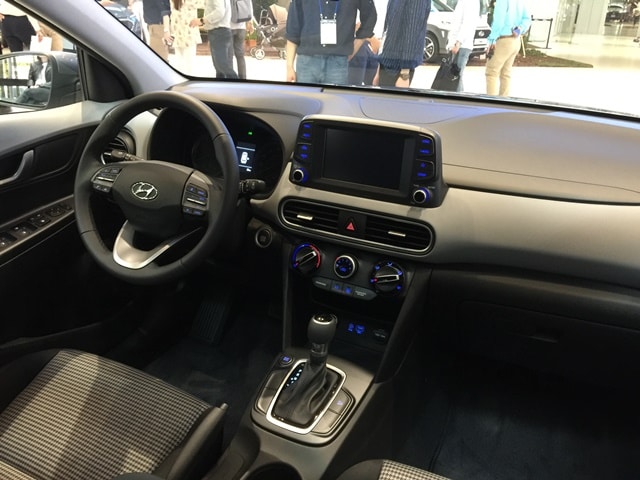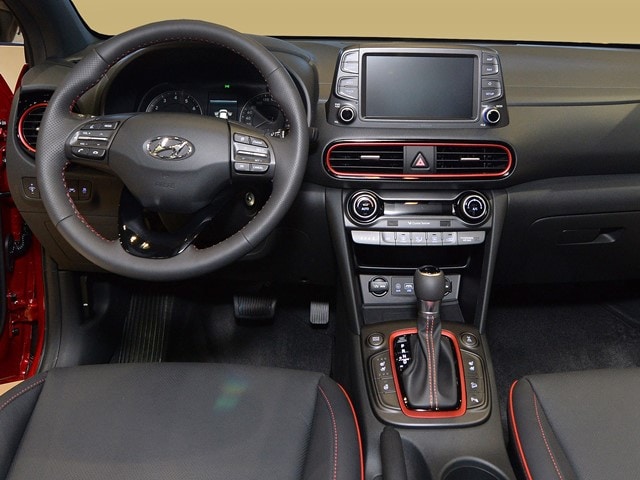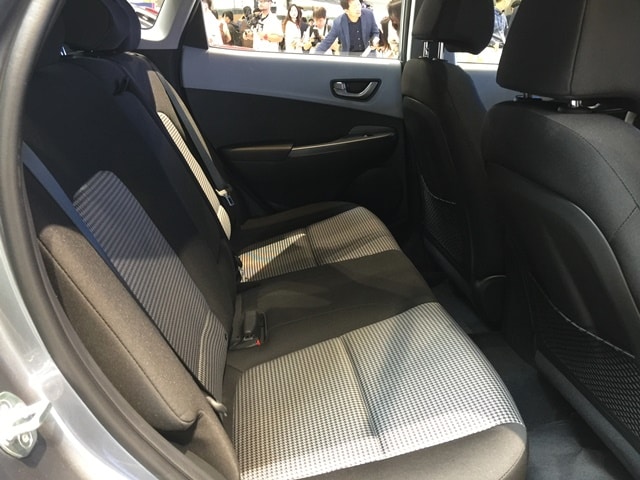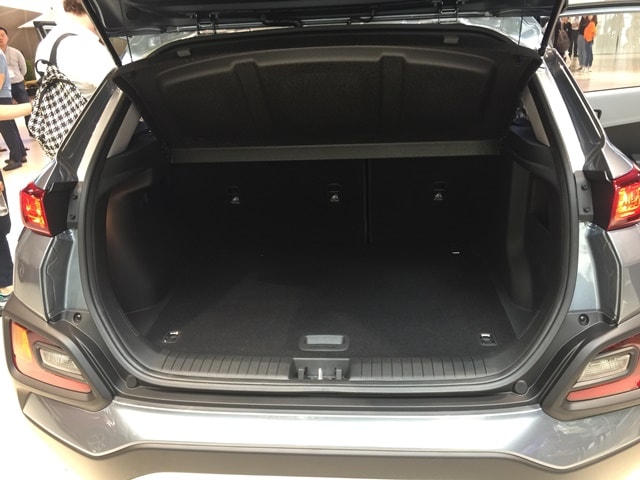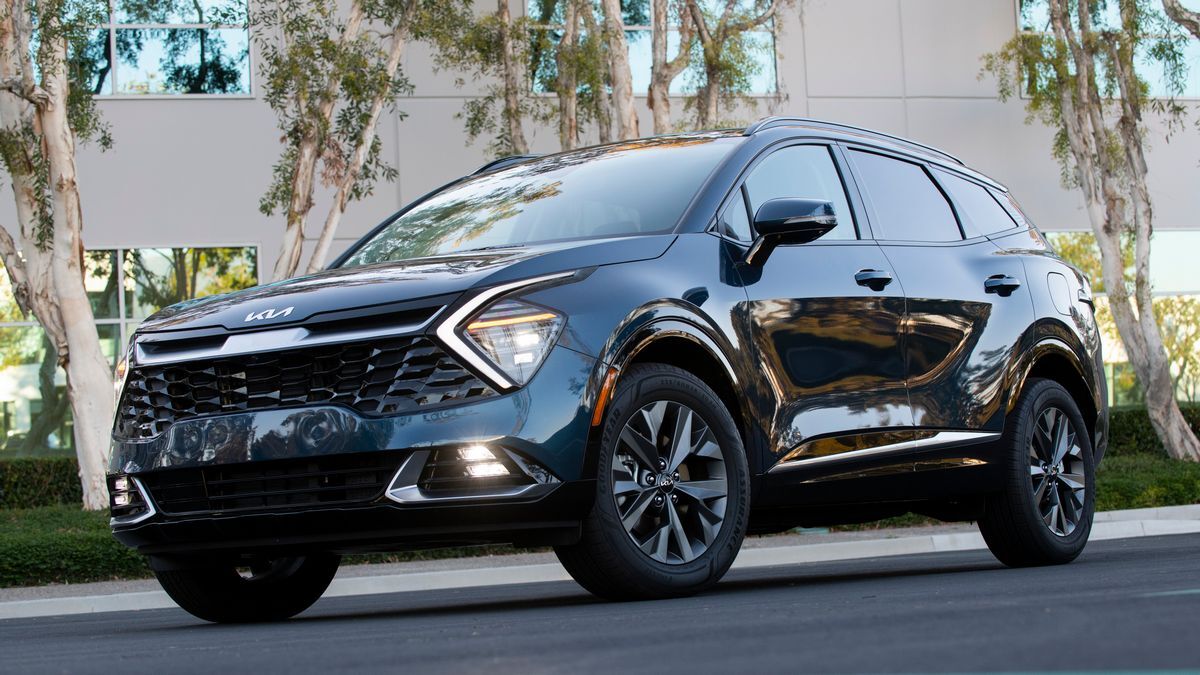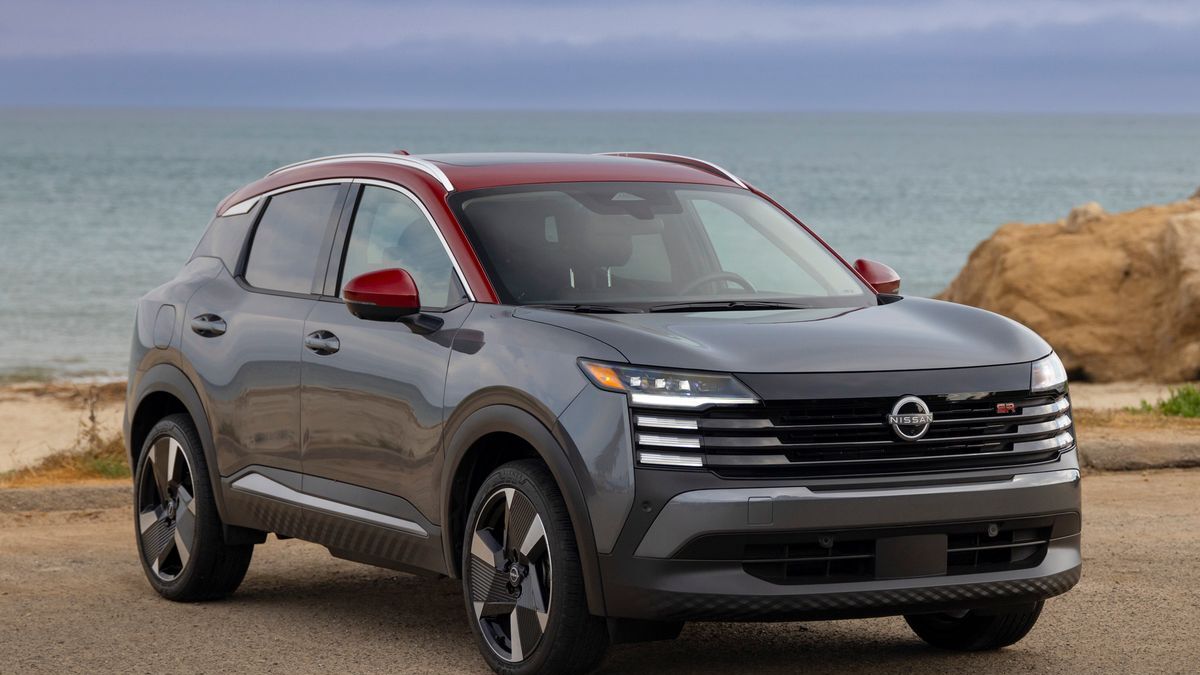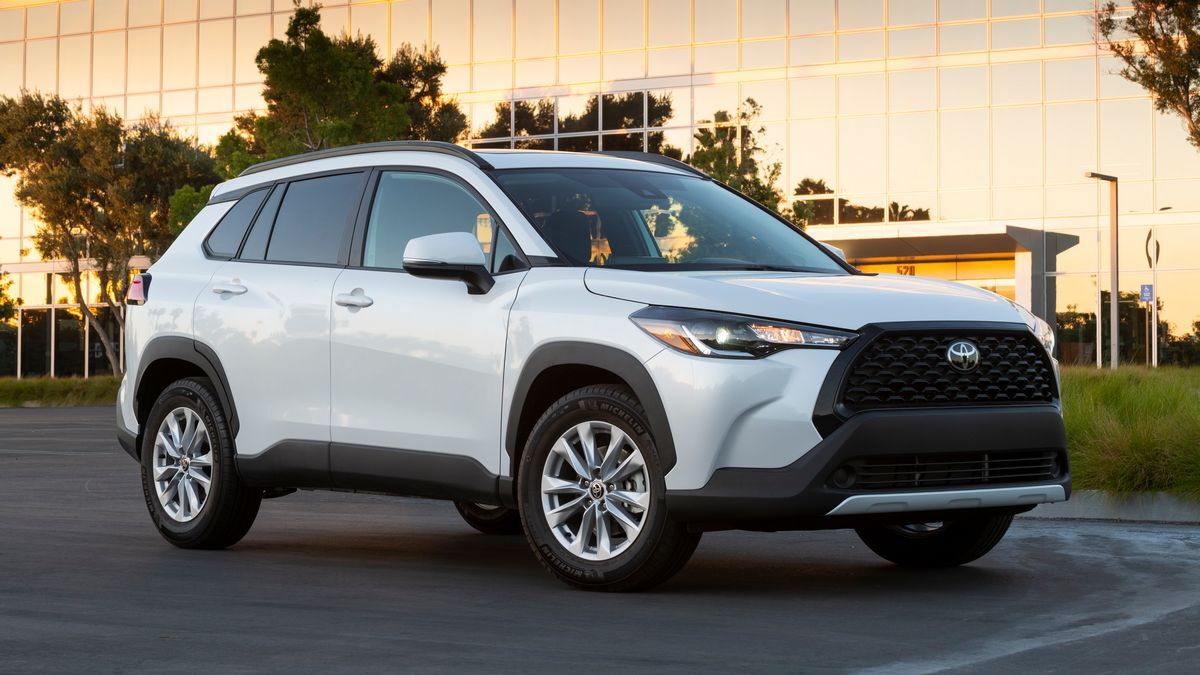Update: You can now read our first review of the 2018 Hyundai Kona
The fast-growing subcompact SUV segment is set to grown again, as the wraps have come off the 2018 Hyundai Kona. Slated to go on sale in the first quarter of 2018, the Kona will take on SUVs like the Honda HR-V, Toyota C-HR and Chevrolet Trax, offering an appealing mix of bold style and compelling features.
This Kona is not a smaller Tucson or Santa Fe — it’s on a new platform, one that will underpin future models — nor does it resemble either of those models. The new most-affordable SUV in the Hyundai lineup features a modern design that should appeal to younger buyers who want an affordable, practical vehicle that also stands out. Buyers will be able to choose whether they want the roof to be the same color as the body, or a contrasting color.
Also: Five Subcompact SUVs Compared
What should also appeal to younger buyers is the level of available features. There are plenty of impressive standard features in the base SE model, including Apple CarPlay and Android Auto compatibility, cruise control and a 7-inch screen. Moving up to the SEL trim, expected to be the volume model, adds blind spot collision warning, rear cross-traffic warning, push-button start, rear underfloor storage, and available satellite radio. With the Limited, the Kona receives additional niceties, such as leather seats, a power driver’s seat, LED headlights and taillights, and a sunroof. The top-of-the-line Ultimate includes an Infinity audio system, rear parking sensors, three years of no-charge Blue Link telematics services, Driver Attention Warning, Forward Collision-Avoidance Assist, rain-sensing wipers, and a new head-up display that projects an 8-inch-wide image. Smartphone wireless charging is optional for all four models.
While the Kona measures smaller than its key competitors, engineers focused on packaging the transmission, all-wheel-drive system and suspension in a manner that would maximize room in the 5-passenger cabin. The rear suspension design, for example, allows for a lower floor and seating position, which opens up more rear-seat headroom. With the rear seats up, there is 18.4 cubic feet of cargo volume, and the 60/40 rear seat is made to fold flat when you want to carry larger cargo.
Also: Compact SUV Buyer’s Guide
The Kona will be available with two engines: the SE and SEL will be powered by a 147-horsepower, 2.0-liter Atkinson 4-cylinder engine with a 6-speed automatic transmission. Limited and Ultimate trims will come with a turbocharged, 1.6-liter 4-cylinder engine that puts out 175 horsepower and 195 lb-ft of torque, matched with an efficient and quick-shifting 7-speed dual clutch transmission. All-wheel drive is available with both engines and all trim levels, and adds a dual-arm multi-link rear suspension in place of the rear torsion beam of front-drive models.
This stylish new entry into the subcompact SUV segment shows a lot of promise. Crucial to the Kona’s success will be the price range and fuel economy, neither of which have been announced.
